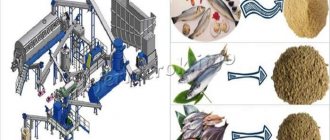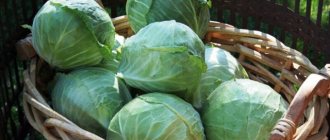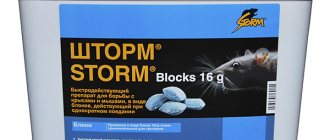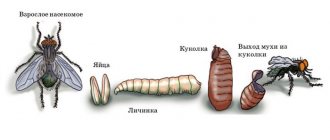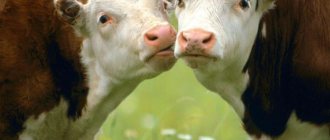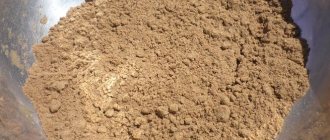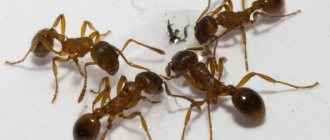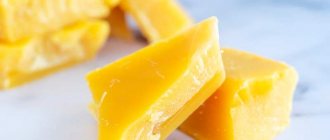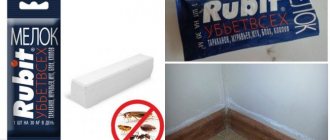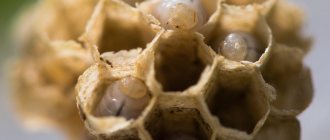What is the product
There are several types of beet pulp:
- fresh;
- canned;
- sour;
- dried;
- vinous;
- amide;
- molasses.
Most often, dried granulated beet pulp is used to feed animals on farms. The fresh product of this variety is obtained from root vegetables in special diffusion plants. Such pulp is usually dried directly at sugar production factories. For enterprises of similar specialization, it is a source of additional income from sales.
How to make granulated dry pulp
Compared to raw processing waste, such a product has a number of undeniable advantages. Dry granulated beet pulp is much easier to transport and store. At the same time, it does not lose its beneficial feeding properties for a long time and does not deteriorate. Granulated pulp is made in sugar factories using approximately the following technology:
- fresh pulp is pressed in special installations to remove moisture;
- the resulting mass is supplied to the granulation line (rotary presses);
- The granules are ventilated and additionally dried.
Processing beet pulp using this technology makes it possible to obtain a product with a moisture content of up to 13%.
Currently, the share of granulated pulp supplied to the market is almost 30%. That is, a significant part of the fresh product is processed in this way. A certain amount of pulp produced at sugar factories in Russia is even exported abroad.
Main area of use
Most often this product is used on cattle breeding farms. Sometimes livestock farms purchase granulated beet pulp in its pure form. But most of this product is still supplied to enterprises involved in the production of animal feed. The value of pulp as a feed additive used in raising cattle lies primarily in its nutritional value and ability to some extent strengthen the body of animals. After all, in addition to proteins, this product contains a large amount of vitamins and beneficial microelements. In terms of nutritional value, beet pulp occupies a middle position between oats and meadow hay.
This type of feed can be used when raising not only cows, but also:
- goats and sheep;
- horses;
- pigs.
Beet pulp is not given to rabbits in its pure form. This type of food can cause gastrointestinal problems for them. However, pulp is still sometimes used as part of mixed feed in farms of similar specialization.
Advantages and disadvantages
Farm animals require increased protein intake to increase productivity. Protein digestion occurs only in the presence of slow carbohydrates, which are often lacking in food. Beet pulp contains a lot of fiber, which makes it possible to compensate for this deficiency.
Positive aspects also include:
- taste . Cattle willingly eat beet products;
- ease of storage and transportation . The granules do not spoil for a long time, are quite light in weight, do not require refrigeration in summer or heating in winter, and do not attract rodents;
- payback _ Low prices allow you to reduce costs for feed, and livestock productivity increases. Thus, the profitability of farms increases (in the case of cattle up to 25%, with small cattle and pigs – up to 40%);
- nutritional value . Rich in microelements and vitamins, it provides the substances the animal body needs.
Cows readily consume beet pulp
There are not many disadvantages of pulp, but they cause significant inconvenience if they are neglected:
- change in the structure of milk . Hard butter, unripe cheeses, and sour whole milk are obtained if the dosages are not correct;
- gastrointestinal disorders . Young animals are mainly affected. It also threatens if the recommended daily allowances are exceeded;
- the need for precise doses . The granules must be weighed before serving. This is not always convenient;
- necessity of preparation . Soaking takes some time, and granules should absolutely not be used dry.
You cannot feed granulated beet pulp in dry form.
For some, the need for storage space may be a disadvantage. However, this minus is compensated by the lack of constant movements to buy food that is running out and spoils.
Feed value
The product beet pulp is therefore even more nutritious than hay. One hundred kilograms of this feed is equivalent to 85 feed. units Often on the market you can find not only ordinary granulated dry pulp, but also one enriched with amidominerals. 100 kg of such a product contains 71-76 feed. units At the same time, there are more proteins in this type of pulp.
Granulated beet pulp, the use of which is justified in farms of almost any specialization, contains:
- cellulose - approximately 45%;
- sugar - 1%;
- protein - 2%;
- minerals - 1%;
- pectin substances - 50%.
The value of this food, among other things, is that the carbohydrates it contains are easily digestible. The nutritional value of the dry granulated product is 12-13 times higher than raw beet pulp.
Drying
Of course, pressed and ensiled feed of this variety is not fed to animals during its production process. A significant part of it is put into storage. Of course, it is undesirable to keep raw or even pressed beet pulp in warehouses. Fermentation processes begin to occur in it quite quickly. As a result, the pulp loses its taste, and its feeding properties are significantly deteriorated. Therefore, beet factories create special workshops in which this product is dried. This procedure consists of several stages:
- Squeezing part of the water out of the pulp. In this case, pulp pressing equipment is also used.
- Actually drying. At this stage, special tower and drum type machines are used. When performing drying, heat from the gases of the boiler room of a sugar factory is usually used.
- Briquetting. In this case, pressing equipment is also used. During the briquetting process, a little molasses (about 20%) can be added to the pulp. This significantly increases its feed value.
The characteristics of this product, like others intended for feeding to animals, are regulated by GOST. Dried beet pulp must contain no more than 14% moisture and no less than 7% protein in terms of dry matter. This product must contain at least 10% sucrose. From 100 kg of fresh pulp, 7 kg of dried pulp is obtained.
Use in raising cattle
In addition to proteins, beet pulp contains a very large amount of fiber. Therefore, it is usually fed to cows on farms in combination with enzyme preparations and probiotics.
Very often, beet pulp in farms specializing in raising cattle is also used as part of compound feed. This product is used in this way primarily because it is able to improve the taste of such mixtures. Judging by the feedback from farmers, animals eat feed containing beet pulp much better than usual.
Feeding technology
Unprocessed dry beet pulp is given to cows only as part of feed. In its pure form, it should be pre-soaked in hot water in a ratio of 1:3. Steamed pulp is eaten by animals quite readily. Soaking also has a positive effect on the digestibility of this feed by the body of bulls and cows.
As part of compound feed, beet pulp is usually used to replace half of barley or oats in the cattle diet. This allows you to increase milk yield and weight gain of animals. Compound feeds of this variety are prepared taking into account the fact that they should contain approximately 10% beet pulp.
To obtain a pronounced effect in terms of increasing milk yield and milk quality, it is recommended to use 5-7.5 kg of this product per day per animal.
Issue norms
You can feed beet pulp to animals in the following quantities:
- For young cattle - 50 kg per head per day.
- Adult animals - 80-85 kg.
At the same time, you can feed animals with pulp:
- adults - 80-90 days;
- at the age of 3-4 years - 90-100 days;
- young animals 1.5-2 years old - 100-120 days.
When using beet pulp as a means of fattening, roughage in an amount of at least 3-3.5 kg should also be included in the diet. Cows, for example, are usually given straw.
Beet pulp: application in pig farms
Since this product contains easily digestible carbohydrates, feeding it to piglets helps stabilize the microflora in their rumens. And this, in turn, leads to a decrease in morbidity and loss in the herd, as well as better weight gain in pigs. In addition, in farms of similar specialization, beet pulp can be used to improve the taste and, consequently, the palatability of feed. Owners of pig farms have noticed that the consumption of this product by pigs also prevents the development of acidosis.
Some diets developed specifically for piglets promote rapid weight gain, but can also cause diarrhea in animals. To reduce the likelihood of developing diarrhea, beet pulp is often added to this “menu”. The production of this type of food involves the use of technologies that make it a product that also differs in its absorbent properties.
As with feeding cattle, pulp for pigs is initially soaked in water until crumbly. Its recommended amount in the diet of piglets is 0.75-1.5 kg. It is impossible to exceed this figure, for example, to save other feed. Pigs should not receive too much pulp. Otherwise, they may develop coprostasis (fecal stagnation). Animals with too much pulp in their diet will gain weight. But unfortunately, not due to the development of muscle tissue.
In addition to piglets, many farmers also use pulp to feed sows. In this case, the main value of the product is that it contains a lot of fiber. The latter is necessary for pregnant mothers because:
- increases intestinal volume;
- causes a feeling of satiety;
- binds toxic metabolic products, etc.
That is, fiber normalizes food processes and maintains good health of the animal.
Forms of preparation
Technologies for the production of granulated pulp make it an excellent absorbent. 1 kg of dry product must be soaked in 3 liters of liquid until crumbly. Neglect of hydration leads to gastrointestinal problems in animals. Hard granules are difficult to digest, swell with stomach acid and cause constipation.
Experts advise small livestock and young animals to grind pieces of pulp in a grain crusher or similar unit. Water is added to the resulting grains. You can also mix in grain (no more than 50%), mixed feed (up to 10%), and other vegetables.
Granules are soaked before serving
The properties of the sorbent can be used to advantage. When ensiling wet greens, juice is often lost. To preserve maximum nutrients, the mown grass is placed in layers alternately with molasses granulated pulp. Do the same with beer grains. The “dish” is served to the cattle as the pellets swell.
Use in horse breeding
These animals should receive an average of 0.3-1.5 kg of dry product per day. The use of beet pulp on horse farms helps improve the health of horses, making them more active and strong.
One of the features of the body of such animals is that they do not have a gallbladder. Because of this, horses must constantly eat something. This is approximately what happens during pasture farming. In meadows, horses constantly chew grass. When kept in stables, these animals are fed only a few times a day. At the same time, between meals, the acidity in the stomach of horses can increase to critical levels. To prevent this from happening, farm owners often use beet pulp. The fact is that this product, among other things, contains a large amount of pectin. And these substances, in turn, are able to form a thin protective film on the walls of the stomach. As a result, the acid formed in the gastrointestinal tract of horses in the absence of feed does not harm them at all.
Among other things, beet pulp also has a prebiotic effect. That is, it supports the growth of beneficial bacteria in the horse’s intestines.
Getting granulated sugar
Sugar beet processing technology consists of 5 stages.
Preparation
Beets received from fields or vegetable stores are cleaned of dirt, tops and other debris that can harm the equipment. The hydraulic conveyor is equipped with stone and tops traps. During cleaning, the water in the sink does not exceed 18 °C. Operators monitor this: a higher temperature will wash the sugar out of the vegetable, and the entire batch will be unusable.
Water is diluted with lime chloride in a ratio of 10–15 g per ton of beets.
Next, the root crops are transferred to a transport belt under air pressure. The remaining dirt particles are removed by blowing.
Grinding
After cleaning, the beets are weighed and placed in a hopper. Below it is a rotating drum with installed blades. The fruits fall under their own weight and are crushed to chips 5-6 mm wide and 1-1.5 mm thick.
Diffusion
The next stage involves a diffuser and a dryer for recyclable materials. In an installation at 70 °C, the crushed beets are doused with water. The sugar is washed out of the chips and remains in the liquid. The resulting solution is saturated with sugars, and microorganisms can quickly develop in it, which can lead to an explosion. To prevent this from happening, formaldehyde is added to the water - 0.02% by weight of the chips. The output is diffusion juice. The shavings turn into beet pulp, which is sent to dryers.
Juice filtration
The resulting diffusion juice is purified in defecation apparatus. An alkaline solution is added to it, as a result, the organic matter in the composition dissolves and the proteins settle. Then the saturation stage occurs: the liquid is saturated with carbon dioxide. This makes the solution clear. The next step is filtration, and if necessary, repeated bowel movements. Finally, the resulting solution is treated with sulfur dioxide.
Condensation and crystallization
The solution is evaporated to a saturated state and sent to vacuum devices with low pressure. The juice boils and thickens.
Sugar crystals begin to fall out. Once in the centrifuge, the crystals are clarified and transformed into the final product - granulated sugar.
Granulated beet pulp: application for sheep
This product is also considered very useful for the health of small animals. Pulp is used when feeding sheep in the same way as when raising cows. In the morning, the granules are brewed with hot water and in the afternoon, after steaming, they are fed to the animals. Sometimes the resulting crumbly mass is additionally mixed with bran (600 grams of pulp per mug). To improve the properties of such food, a little sulfur and calcephos are often added to it.
Beet pulp is usually included in the diet of sheep and goats only in winter. In summer, animals are given fresh vegetables and root vegetables. There should be approximately 0.2-1 kg of pulp per sheep per day.
Which farm animals can be given
Beet pulp can be called a universal product, suitable for feeding to many farm animals, except cows:
- horses;
- pigs;
- goats;
- sheep.
The daily dosage for the listed animals is selected taking into account their weight. Thus, we can conclude that beet pulp in the form of granules is a universal, nutritious, relatively inexpensive and very popular type of feed in livestock farming, which can significantly improve production rates, as well as the quality of milk and meat.
agronomu.com
Product cost
The price of beet pulp on the market is relatively low. The enormous popularity of this product among farmers is partly explained by this. The use of beet pulp helps to reduce feed costs and, consequently, increase the profitability of farms.
The cost of this product depends primarily on the characteristics of the economy of this particular region. If there are sugar factories in the area where the farm is located, the pulp will cost less, and if not, then it will be correspondingly more expensive. On average, owners of farms and household plots have to pay about 250-300 rubles (retail) for a bag of this product. By weight, beet pulp costs about 8 rubles. per kilogram.
How to properly store a granular product
One of the features of dry pulp is that it is rarely eaten by rats and mice. Farmers, of course, consider this to be an undoubted advantage of this product. Drying beet pulp significantly extends its shelf life. If all the required storage technologies for this product are observed, it does not lose its beneficial properties for an indefinitely long time. Such food should be stored exclusively in dry rooms.
If the moisture content of the pulp exceeds 15%, harmful microorganisms will begin to develop in it. And this, in turn, will lead to its rapid deterioration. This food can collect water only if the air humidity in the warehouse is above 60%. Storing beet pulp in a room with an air temperature of 0 to +25 degrees Celsius also helps prevent its spoilage.
Of course, this product should be stored in such a way that it does not get rainwater from windows or melt water through holes in the roof. Moistening the pulp leads to its rapid molding. Moreover, after some time the mass soaked in water may begin to heat up from the inside. Unfortunately, there are even cases of ignition of improperly stored pulp.
A granular product absorbs moisture more slowly than a loose product. However, in this case it is also necessary to comply with storage rules regarding humidity and temperature.
Quality assurance in the silage and silage removal process
Every silo trench needs constant “management”. To do this, it is necessary to regularly check the film or polymer sleeve for damage, and if any, repair it. It is advisable to cover the silo trench with a protective net (from birds, hail and other damage).
Opening and removing pulp from the trench
The pulp is opened no earlier than 6 weeks from the moment the silo trench is closed, and even better - after two months. This guarantees sufficient cooling of the ensiled pulp (to ambient temperature). If the silo trench is opened early, the pulp temperature will be high. This means that yeast and mold will receive optimal conditions for development and cause anaerobic rotting of the silage.
Also, high ambient temperatures during ensiling can slow down the cooling of the silage mass. If there is any doubt whether the pulp in the trench has cooled sufficiently, you need to measure its temperature using a thermometer.
The following activities are the most significant to ensure high quality silage pulp:
- sufficient excavation speed (winter > 0.2 m/day; summer > 0.4 m/day)
- smooth, vertical cutting area
- no loosening of the mass during the excavation process
- removal of residues
Quality assurance during silage in polymer bags
Ensiling in bags, subject to technology, ensures rapid removal of air, the necessary compaction and thus rapid fermentation, which ensures high quality pulp and little waste.
To guarantee the quality of nutrients and the quality of fermentation of silage pulp, it is very important to consider the following points:
- The polymer hose must be regularly (once a week) monitored for damage and repaired. It can be damaged by birds, cats, rodents and people themselves. The air and rainwater that gets inside in a short time leads to rotting on a large scale. You can additionally protect the sleeve from birds with a special protective mesh.
- Regular monitoring of the integrity of the hose, as well as the time of its opening, should be documented.
- when the gas pressure in the hose drops, after about two days you need to close the valve. Depending on the conditions, if gas continues to form, it is permissible to open the valve additionally briefly to avoid spontaneous opening or rupture of the hose.
- The sleeve should be opened after 6 weeks at the earliest, in warm autumn weather it is better after two months to ensure sufficient cooling before opening.
- If possible, open the sleeve on the side that is more protected from the wind.
- The film should be cut from the side (at knee level), then cut through the middle to the other side (see fig.) Always leave more film at the bottom to ensure sufficient hygiene when collecting the pulp.
- covering the cut with film - if possible, immediately after the cut, securing it with a rope, and securing it on top with tires, sandbags or canisters filled with water. This is necessary to squeeze out any trapped air from the sleeve.
- excavation must be carried out at sufficient speed. The cut should be smooth and vertical. After removal, there should be no flakes left on the cut. Too long a film can cause the development of microorganisms, so it should not be allowed. It is better to cover the cut with a film that has been dried or washed clean by rain.
- Freezing of the pulp can be prevented if, before a long period of frost, part of the sleeve is covered on all sides with straw bales or rolls. Frozen food can lead to diarrhea.
